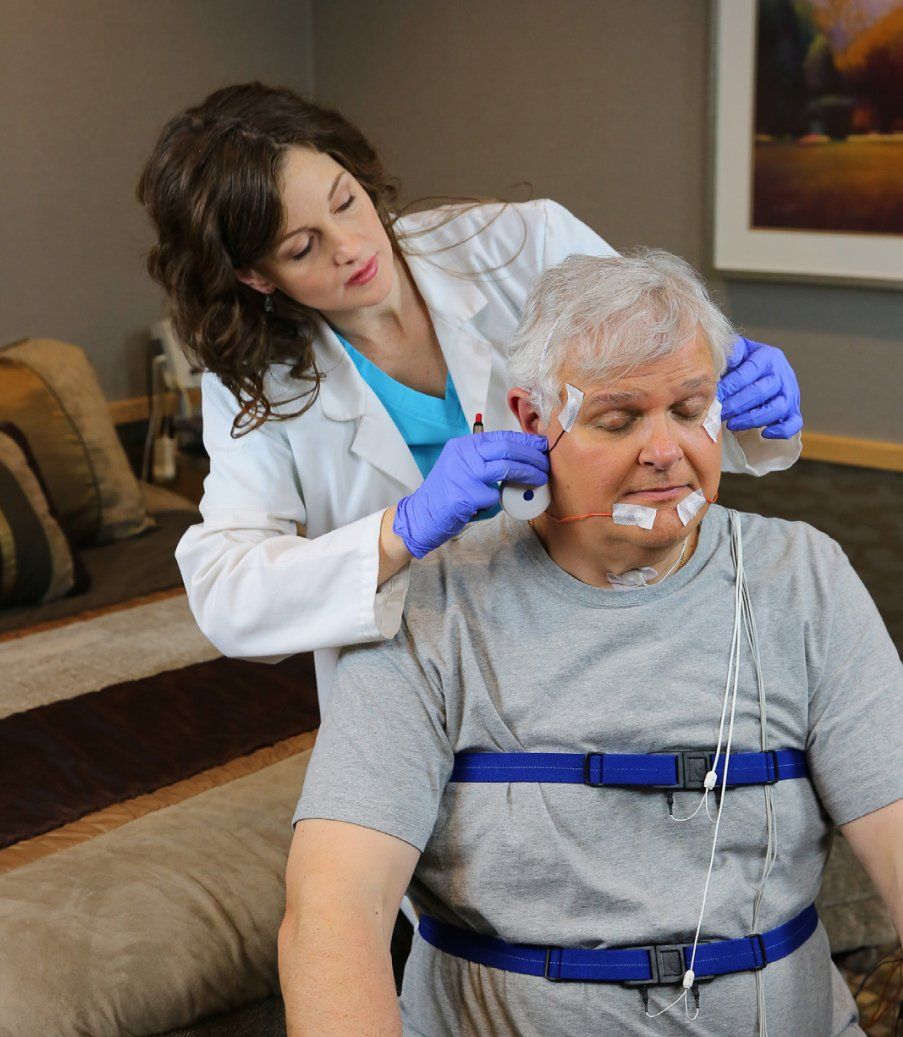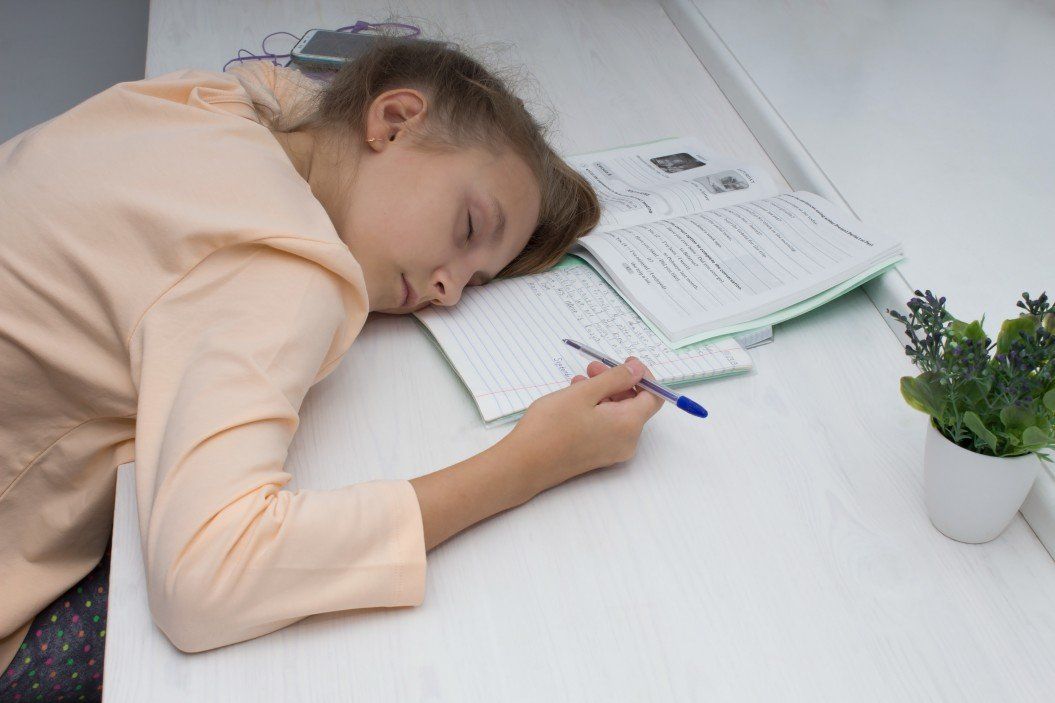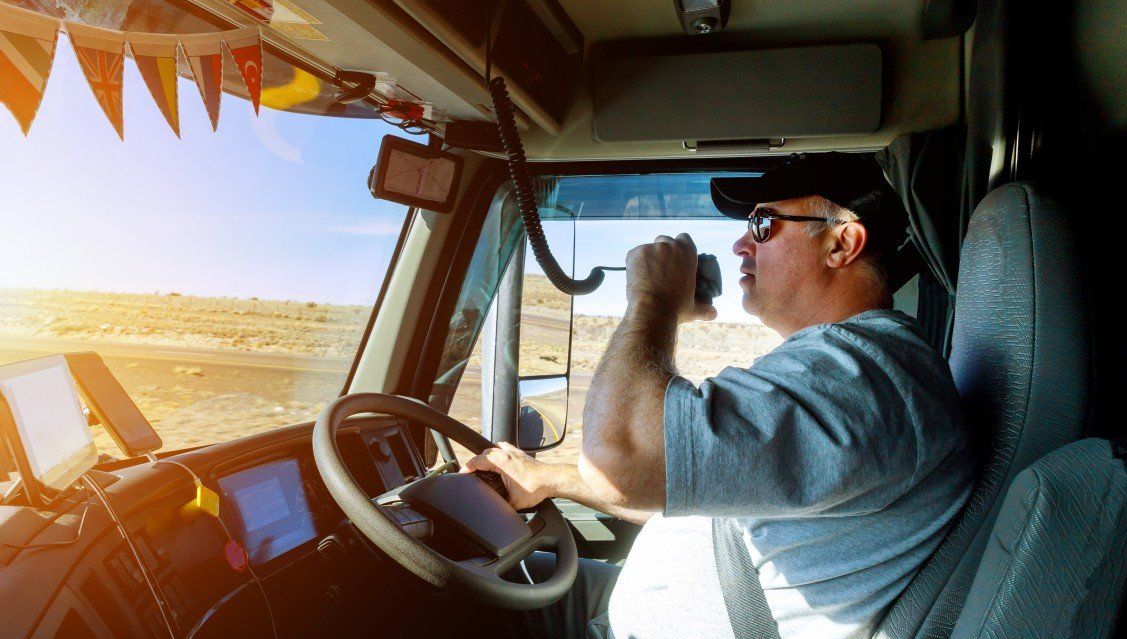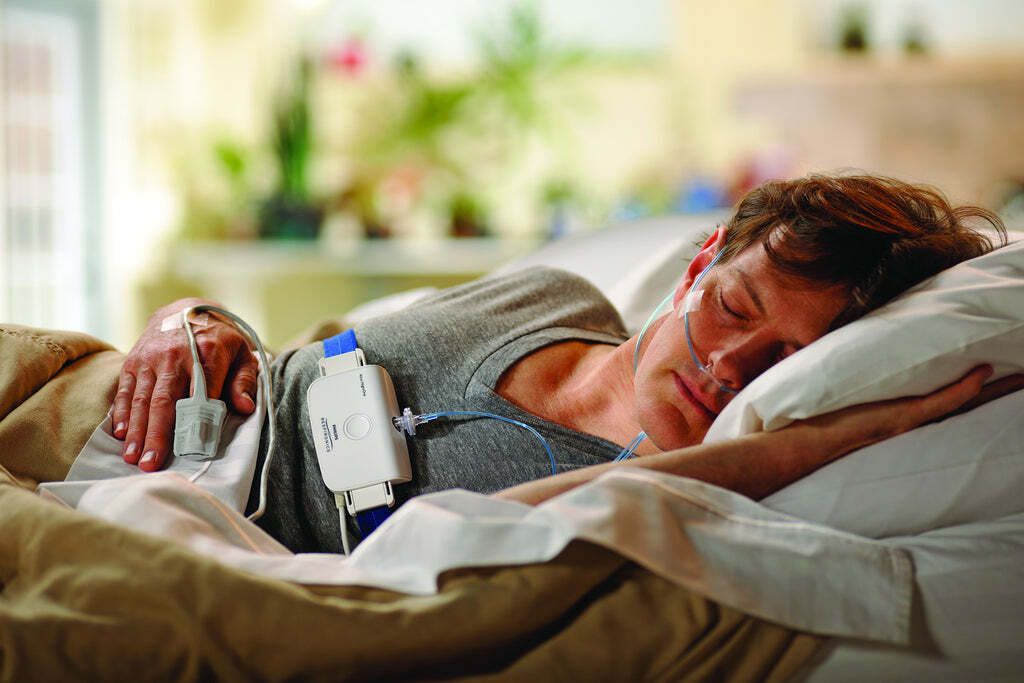
About our Practice
Sleep Studies
What is a sleep study?
If your physician suggests that you undergo a sleep study, or polysomnography, you may be wondering what's involved in this test and what to expect. Sleep studies are a non-invasive, overnight test which helps the physician diagnose sleep disorders such as sleep apnea, periodic limb movement disorder, narcolepsy, restless legs syndrome, insomnia, and nighttime behaviors like sleepwalking and REM sleep behavior disorder. During this exam, your physician is able to monitor you while sleeping to detect the presence of abnormal disruptions to your sleep and breathing.
There are two main types of sleep studies performed today, In Lab Sleep Studies and At-Home Sleep Studies. The In Lab study is a more comprehensive type of sleep study which is performed in a sleep lab and involves an overnight stay for testing and observation. The alternative is an At-Home sleep study which is used exclusively for the diagnosis and management of obstructive sleep apnea. You will find a more detailed description of both types of testing below. The most appropriate type of testing will be determined by your physician, based on you clinical situation.


What is an In Lab Sleep Study?
An In-Lab sleep study is a comprehensive overnight test performed by a skilled technician using various sensors to collect important data about your sleep. This test will be performed a in a facility specially designed to mimic the experience of staying in a hotel. The test will involve the preparation and application of several small electrodes, sensors, and belts to monitor things such as brain activity, eye movements, muscle tone, airflow, heart rhythms, and leg movements.
While you are sleeping, the electrodes will record data to help your physician identify your sleep stages, cycles of sleep, and possible causes of disruption that occur while you are asleep. The most common disorder observed during an overnight sleep study is sleep apnea, which is interruptions in your breathing that cause sleep frequent disruption to your sleep. This is often accompanied by loud snoring, morning headaches, and daytime sleepiness.
In addition to sleep apnea, there are numerous other forms of sleep disorders which could be diagnosed during an In-Lab sleep study. Some examples of other sleep disorders include REM Behavior Disorder, Periodic Limb Movement Disorder, Sleep Walking, and Sleep Talking.
Nocturnal Polysomnography (NPSG)

This is an overnight test, performed by a specialized Technologist, in a sleep lab for the purpose of diagnosing sleep disorders. The test involves the application of several small sensors or electrdoes, to various places on the body to gather important information about your sleep, breathing, and activity throughout the night. Some of the information gathered includes brain wave activity, muscle tone, breathing effort, heart activity, oxygen levels, airflow restriction, and body movements.
Positive Airway Pressure (PAP) Titration

Once a patient has been diagnosed with obstructive sleep apnea (OSA), there are a few treatment options available for the patient. The most common treatment is CPAP, which involves positive airway pressure to help prevent airway obstruction while sleeping. This form of therapy requires careful adjustments to the pressure settings on the CPAP machine to determine the optimal pressure to treat the sleep apnea. This is called a Titration Study and is performed as an overnight study in a sleep lab, very similar to a regular NPSG.
Multiple Sleep Latency Test (MSLT)

The Multiple Sleep Latency Test (MSLT) checks for excessive daytime sleepiness by measuring how quickly you fall asleep in a quiet environment during the day. The MSLT is primarily used to diagnose narcolepsy.
The MSLT is a full-day test consisting of a series of five scheduled naps at two-hour intervals. Typically this test is performed immediately following an overnight sleep study (NPSG) to rule out other sleep disorders. Each nap will be taken in a dark and quiet sleep environment that is intended for your comfort and to isolate any external factors that may affect your ability to fall asleep.
Maintenance of Wakefulness (MWT)

The Maintenance of Wakefulness Test (MWT) is used to measure your level of daytime alertness.
It demonstrates your ability to stay awake for a pre-determined amount of time without the assistance of external stimulus.
The test is performed in a dark, quiet room that isolates you from outside factors that can stimulate your ability to remain awake. The MWT is often used to assess whether or not a person is too sleepy to drive or perform other daily tasks. The results of the test will be only one factor used to assess the potential risk of a work-related accident.
What is a Home Sleep Test (HST)?
A Home Sleep Test (HST) utilizes a simple recording device to collect information needed to diagnose sleep apnea. The recording device involves sensors which will measure breathing effort, airflow, oxygen levels, and heart rate. A Sleep Technologist will provide clear instructions for device application and you will wear the device at home for one or two nights while you sleep.
This has become a widely accepted method of testing for sleep apnea which is covered by most insurance plans. Not everyone is a candidate for a home sleep study due to the recording limitations involved with this simple device. Your physician may recommend a home sleep test if the following criteria are met:
- It is highly likely that you have moderate to severe sleep apnea
- You have no significant medical conditions other than the suspected sleep apnea
Some situations which may exclude you from having a home sleep study include:
- You do not have a high risk of sleep apnea
- Your doctor suspects that you have another sleep disorder
- You have certain medical conditions including pulmonary diseases, neuromuscular diseases or congestive heart failure
- It is physically difficult for you to administer the test at home
In these cases of exclusion from a home sleep study, your physician may recommend an In Lab sleep study instead of a home sleep test.
Subscribe to our
Newsletter
Our newsletter is focused on bringing you the latest in news about our office, medical advances, and health & wellness tips.
Join the Newsletter
Thank you subscribing to our newsletter.
Oops, there was an error sending your message.
Please try again later

Southeastern Lung Care, All Rights Reserved.
Website Design: BAC MediaGroup, LLC

